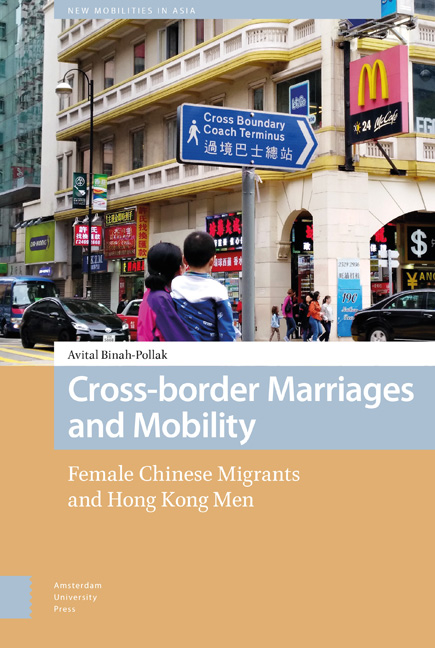Book contents
- Frontmatter
- Contents
- List of Figures and Tables
- Acknowledgments
- Introduction
- 1 The Hong Kong-China Border: A Space of Confinement and Movement
- 2 Motivations for Crossing Borders
- 3 ‘Same as Before, Living as a House Wife’
- 4 Hong Kong's Education: A Bridge to the ‘First World’
- 5 New Voices in Hong Kong: Local Identity Formation
- Concluding Thoughts: Home Is not where the Heart Is but where it Wants to Be
- Bibliography
- Index
5 - New Voices in Hong Kong: Local Identity Formation
Published online by Cambridge University Press: 21 November 2020
- Frontmatter
- Contents
- List of Figures and Tables
- Acknowledgments
- Introduction
- 1 The Hong Kong-China Border: A Space of Confinement and Movement
- 2 Motivations for Crossing Borders
- 3 ‘Same as Before, Living as a House Wife’
- 4 Hong Kong's Education: A Bridge to the ‘First World’
- 5 New Voices in Hong Kong: Local Identity Formation
- Concluding Thoughts: Home Is not where the Heart Is but where it Wants to Be
- Bibliography
- Index
Summary
When I first entered the apartment where I lived during one of my research trips to Hong Kong, I was surprised to discover that an image from the 1989 Tiananmen demonstrations covered the entire wall of the main room. The poster was about two meters long and three meters wide, and it depicted the square after the tanks entered Beijing and the massacre took place. This was the image of the terrible outcomes of the demonstrations – the death and wounding of hundreds of young people who believed they were fighting for a democratic China.
This apartment was intended to host artists visiting Hong Kong; I had been given the opportunity to spend the summer of 2013 there because of my close contacts with several young Hong Kong artists and social activists. The apartment was owned by the Hong Kong government, which had loaned it to a group of artists to establish a unique art-space called ‘Woofer Ten’. The art-space and apartment on the floor above were located on Shanghai Street in the bustling Kowloon district. The name of the art-space – ‘Woofer Ten’ (Wut faa in Cantonese, Huo hua in Mandarin) – means ‘activation’. According to the group's members, the idea of ‘activation’ was the main idea behind the establishment of the community. The members of ‘Woofer Ten’, mostly young artists but also older social activists and even one eightyyear- old woman, view themselves as social and political activists who are nurturing an alternative community in contemporary Hong Kong. The activities which take place at ‘Woofer Ten’ are mostly voluntary and include: organizing exhibitions of local and international artists, many of them political artists; promoting and selling local handmade products and artwork; holding lectures and discussions about both art and issues related to contemporary Hong Kong society; and coordinating communal activities for the neighbourhood such as English and art classes for children. Many of the group's members are also involved in other social projects around the city. These activities often include events in poor districts in Hong Kong, including Sham Shui Po where there is a large percentage of mainland marriage migrants, who often also take part in these social events.
- Type
- Chapter
- Information
- Cross-border Marriages and MobilityFemale Chinese Migrants and Hong Kong Men, pp. 147 - 166Publisher: Amsterdam University PressPrint publication year: 2019



